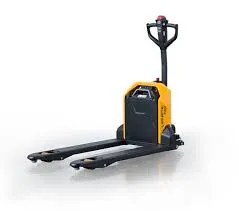


Understanding Fall Protection Devices A Crucial Element in Workplace Safety
In various industries, particularly in construction, manufacturing, and maintenance, falls from heights are one of the leading causes of serious injuries and fatalities. As such, implementing effective fall protection measures is essential for safeguarding workers. Fall protection devices play a pivotal role in creating a secure working environment. Understanding the different types of fall protection devices and their applications can greatly enhance workplace safety.
What Are Fall Protection Devices?
Fall protection devices are safety equipment specifically designed to prevent workers from falling when working at elevation. They encompass a wide range of products, from personal protective equipment (PPE) to elaborate systems integrated into the worksite. The primary objective of these devices is to minimize the risk of injury by preventing falls or reducing the impact if a fall does occur.
Types of Fall Protection Devices
1. Personal Fall Arrest Systems (PFAS) PFAS typically consist of a full-body harness, lanyard, and anchorage point. The harness is worn by the worker and distributes the force of a fall across the body, significantly reducing injury risks. Lanyards are used to connect the harness to an anchorage point, ensuring that the worker is secured while working at height.
2. Guardrails Guardrail systems are physical barriers installed around elevated platforms, scaffolding, or roofs. These systems often include toeboards to prevent tools or materials from falling and are made from robust materials like metal or composite. Guardrails are a passive form of fall protection, meaning they do not require worker intervention to be effective.
3. Safety Nets These nets are placed beneath work areas to catch workers in case of a fall. Safety nets are particularly useful in construction sites with significant potential for falls. They are designed to absorb the impact and protect the worker from injury.

4. Lifelines A lifeline is a flexible line secured at both ends to an anchorage point, allowing workers to move freely while remaining tethered to it. Lifelines are often used in jobs involving vertical movements, such as climbing or ladder work. They can be horizontal or vertical and may be used in conjunction with other fall protection devices.
5. Harnesses with Shock Absorbers These specialized harnesses are designed to reduce the amount of force experienced by the body during a fall. Shock-absorbing lanyards or connectors elongate during a fall, dissipating energy and minimizing potential injuries.
Importance of Regular Inspection and Maintenance
To ensure that fall protection devices function correctly, regular inspection and maintenance are vital. This includes checking for signs of wear and tear, ensuring that connections are secure, and verifying that anchorage points are stable and reliable. Employers are responsible for providing training on the correct use of these devices, ensuring that workers understand how to properly don harnesses, connect lanyards, and understand the limitations of the equipment.
The Role of Training and Policies
While having the right fall protection devices in place is crucial, the effectiveness of these measures greatly depends on proper training and adherence to workplace safety policies. Workers must be educated about the dangers of working at heights, the importance of wearing fall protection equipment, and how to use the devices correctly. Regular safety drills and updates on new technology or procedures can keep safety at the forefront of workplace practices.
Conclusion
Fall protection devices are indispensable tools in preventing workplace injuries related to falls. By utilizing a combination of personal fall arrest systems, guardrails, safety nets, lifelines, and shock-absorbing harnesses, employers can create a safer work environment for employees at risk of falling from heights. However, for these devices to be effective, regular inspections, thorough training, and a strong culture of safety must be integrated into the workplace. Prioritizing fall protection not only safeguards workers but also enhances productivity and fosters a strong safety record, contributing to the overall success of any organization. In an era where worker safety should be paramount, investing in proper fall protection measures is not just a regulatory requirement but a moral imperative.



